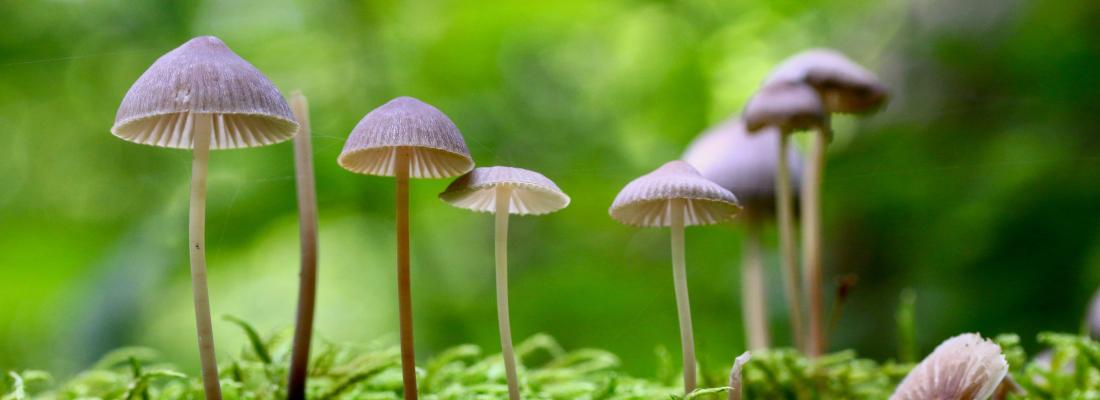Biodiversity Reading time 2 min
Expanding to survive: extensive genomes facilitate decay fungi's adaptation to climate change
Published on 28 June 2024

Bonnet mushrooms (Mycena1spp.) comprise over 400 species, and are found in a wide range of environments across all continents. They play a crucial ecological role in the decomposition of soil organic matter in forests and grasslands. Although widely considered solely as decayers, certain species can colonize plant roots and behave as endophytes2, symbionts, or parasites, demonstrating the versatility of these fungi, which can adopt several lifestyles. Although the exact genetic mechanisms that enable these exceptional adaptive traits are not yet fully understood, bonnet mushrooms have the capacity to flourish in various environments. As natural habitats and old-growth forests continue to decrease and tree plantations and climate change increase, Mycena's genetic and ecological resilience may provide valuable insights into how organisms can adjust to the rapidly changing world. Scientists have examined their genomes to trace evolutionary pathways that have enabled bonnet mushrooms to diversify and evolve over time.
The international consortium sequenced and analyzed the genomes of 24 Mycena species, including litter decayer generalists, wood decayer generalists, grass litter decayer generalists, broadleaf wood decayers, broadleaf decayers, and coniferous litter decayers. Three species were obtained from Arctic habitats. This comparative genomic study revealed that Mycena exhibited striking genomic expansions impacting gene families related to the degradation of soil organic matter and root colonization. This genome expansion can be traced back to the incorporation and preservation of numerous genes from other fungi by horizontal gene transfer, despite the 'cost' of resources and the energy needed to replicate a large genome. Remarkably, the genomes of the bonnet mushrooms sampled in Arctic region were between two and eight times larger than those inhabiting temperate zones. A similar pattern was previously observed in Arctic plants. These genomic traits suggest that massive genomes encoding extensive families of genes facilitate the ecological adaptability of such decomposer fungi, enabling them to adopt multiple lifestyles and thrive in various environments, which is a particularly valuable asset in extreme settings such as the Arctic.
[1] Mushrooms of the genus Mycena, so-called bonnet mushrooms, are basidiomycetes of the Agaricales order.
[2] Organisms that can live and reproduce in the intercellular spaces and/or certain cells of a plant.
REfErence
Harder C.B., Miyauchi S. et al. (2024). Extreme overall mushroom genome expansion in Mycena s.s. irrespective of plant hosts or substrate specializations. Cell Genomics DOI : https://doi.org/10.1016/j.xgen.2024.100586
